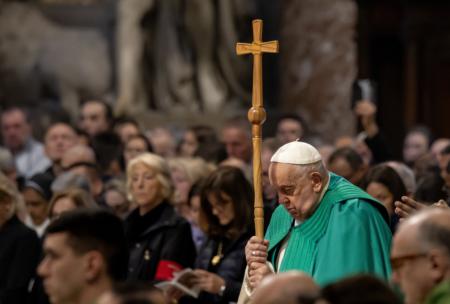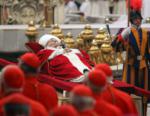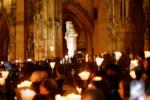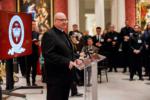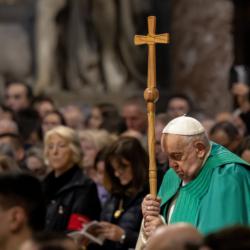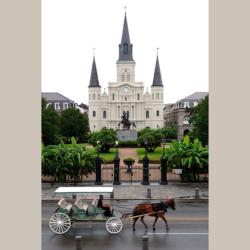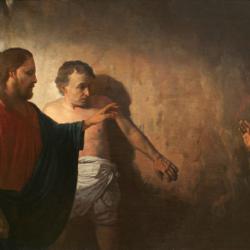Where are the angels?
During the Christmas season as we were singing about angels, I couldn't help but notice that my church was bereft of any images of angels, save, that is, for the lone angel holding up Our Lady of Guadalupe. And it isn't just the lack of angels. There is a serious lack of beautiful imagery in new and renovated churches. The statues of Mary and Joseph are often so plain that they are almost cartoonish. Modern crucifixes convey little of the suffering of Christ. In some cases they have been replaced with a clothed Jesus.
We cannot say that the younger generation is immune to the visual arts. Attendees at rock concerts expect a visual show. The movies are full of visual effects. Nor is this generation turned off by images of the supernatural; indeed they appear to be fascinated by the dark side of the supernatural world. Surely our children would benefit from being reminded of the bright side and reminded that churches are full of angels.
As Catholics we have a magnificent artistic tradition, a tradition we should be passing on to our children, exciting their imaginations and inspiring their piety.
There is really no excuse for a plain, undecorated church. We can't plead poverty. Our forefathers, who were far poorer than we, were capable of building and decorating beautiful churches. Many of us live in gracefully decorated homes. Many of us have religious images in our homes that far outdo those in our churches.
When many churches were stripped of beauty, those who pushed for this reform argued that the decorations were dated. They may have been, but at least they had a message. Modern churches have blank walls and a stain glass without any symbolism, or with images so obscure they cannot be deciphered by the ordinary parishioner. I recall sitting in a church with strangely designed (and frankly rather ugly) stained glass windows. I puzzled over the designs and finally at the end of Mass realized that they were supposed to represent the mysteries of the rosary. The designer had failed to communicate or inspire.
We need beauty in our churches. Tragically, there are few artists working today who can equal the technical expertise and spiritual inspiration of the great artists of the past. The world of "modern art" offers us little. However, there is no reason to despair. All one has to do is go on line and one will find sites that offer large, hand-painted, oil copies of the great religious paintings from the past and at a reasonable price.
Our ancestors were happy to donate beautiful stained glass windows in memory of their loved ones; surely there are many in our parishes who could donate copies of great art to adorn the blank walls and replace the second rate sculpture.
A friend of mine has a large copy of an Adophe Bourguereau Madonna and child with angel musicians hanging in her front hall. I have also seen a full size copy of Velazquez's "Crowing of the Virgin," a painting considered by some to be the finest example of the art of painting. Sitting before great art we are drawn into the mystery. Such art is available in museums; it should be in our churches.
I know there are those who would argue that we should patronize living artists. I have seen some fine work by modern icon painters and illuminators, but there are few modern sculptors and painters who are currently creating works both beautiful, inspirational, and appropriate for a church.
We need a renaissance of Catholic art. Renaissances happen when a generation, which has been deprived of beauty, is exposed to the great art of the past. At first they copy, but then they reinterpret and finally they create something new and unique. I am sure the talent is out there, but training is lacking. Surrounding our children with great art is the first step.
Dale O'Leary is an internationally recognized lecturer and author of "The Gender Agenda: Redefining Equality."
